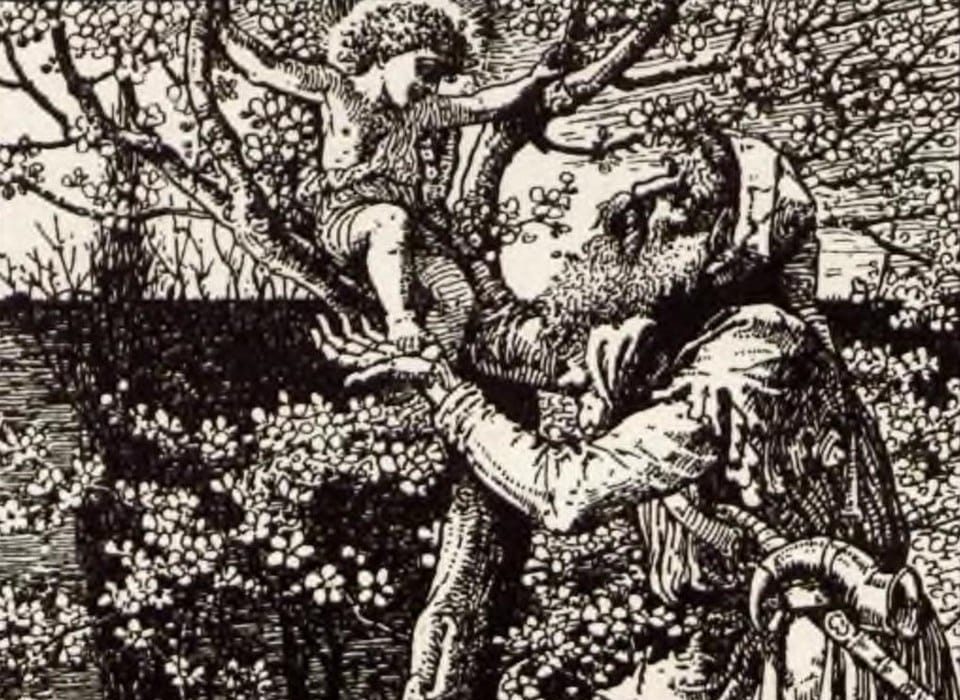Greetings! Today, we are going to go back in time and look at life during medieval times to build a broader context for reading stories set in medieval times. Our perspective is going to be focused on the hierarchical structure of medieval society and the life of a serf. Additionally, I’ve added misconceptions about medieval society to create a more robust reading. All of this will provide needed background knowledge for medieval literature.
The Life of a Serf
Farming and slaving away at a tract of land day and night for 30 years and then dying an early death because of the plague after you lost most of your children in childbirth sounds like a terrible life. But such was the life of a serf. Knowing more about the lives of serfs can help us understand stories set in medieval times more clearly.
Life as fodder in the dark ages
Life as a serf was hard and laborious compared to the modern world, not that back-breaking labor has changed considerably since the dawn of time. However, the major difference is the exchange of labor for basic necessities, and perhaps that’s not all that different in modern times.
During the medieval period, serfs played a crucial role in the feudal system. These “unfree labourers” were an integral part of the societal structure, working on the land owned by feudal lords. While they did not have the privilege to work their own land, they were provided with certain benefits in return for their labor.
Their homes were “simple structures based on a wooden frame.” They built the walls and insulated them with the earth, and the roof was straw. These were homes of necessity. The most common resources found locally composed these houses.
Additionally, the clothing of serfs served the most basic purposes. Medieval fashion was reserved for the lords and ladies. Meanwhile, much of serf clothing entailed a blouse, boots, trousers, a hat on rainy days, a sheath for a knife, and gloves for labor.
Meanwhile, their diets were “monotonous.” They consumed “brown bread and cheese” and “pottage” once a day, which was “a broth of grains, vegetables and possibly some meat or fish.” With these meager and lean luxuries, it was no surprise that starvation was a likely outcome during a difficult season (Havlidis).
The medieval social contract
The lords of the land did not consider serfs “slaves.” They were not owned by their lords. Instead, they were bound to the land, and they were forced to work for the lord who owned it. In exchange for their labor, serfs were granted physical and legal protection. This ensured their safety and security within the feudal manor. Such protection was particularly significant. In an era marked by political instability and the constant threat of invasions and raids, one fought to feel safe.
Moreover, serfs were entitled to work a separate piece of land known as a “villein’s croft.” The lords would give them a small plot of land to raise crops for their own families. The arrangement between the lord and the serf provided a degree of self-sufficiency; though minute and deliberate. Thus, they had access to basic necessities, such as food and shelter, which gave them a reason to not flee into the night.
The life of a serf was demanding, as they had to work in the fields and perform other services for their lord. However, serfs also had communal responsibilities within their village, such as maintenance or the construction of communal buildings. These communal activities fostered a sense of community among serfs.
Social standing in the medieval world
Despite their obligations to the lord, serfs held a particular social position in medieval society (however small). They were considered part of the “peasant class.” the peasant class also included other laborers. However, serfs had a more “secure” status than laborers. They were forcibly tied to the land, and thus given the privilege to tend to it until they died. After their death, then their children would take over for the next half century.
Twain would agree with the following: the serfs were given just enough resources to not starve and just enough privilege to scapegoat their problems onto another class.
If you are familiar with A Connecticut Yankee in King Arthur’s Court, then you know the Gilded Age similarities continue.
However, the role of serfs gradually diminished over time, as social and economic changes brought about the decline of feudalism. Likewise, as these practices fell out of favor–mostly due to coinage–serfs at least had the semblance of a chance to buy their own freedom. As such, serfs gained increased opportunities for social advancement, leading to the eventual decline of serfdom altogether.
What this means for Medieval Litearture
Serfs played a significant role in the medieval feudal system, providing labor and essential services to lords in exchange for “protection” and the ability to work a separate piece of land. But we can’t forget that this relationship, much as Mark Twain points out in A Connecticut Yankee in King Arthur’s Court, is exploitative and sublimely idiotic, as only greed and a hunger for power can provide, as the relationship between the lords and the serfs includes taking advantage of the workers for a few wealthy lords whose objective was to consolidate power and extort wealth from every waking body.
While slavery and serfdom had differences, the similarities between the two are obvious. Regardless, the work of the serf shaped the fabric of medieval society. Historical records and modern media display the serf’s legacy.
Medieval Fallacies
Poisonous tomatoes, uncleanly hygiene, murderous torture, and a flat Earth. All of these things inform us us about medieval times, but they aren’t actually quite true. Let’s take a look at some of the gossip that has arose from medieval times to get at the truth of history.
For this section, I would like to use a story set in medieval times, Mark Twain’s A Connecticut Yankee in King Arthur’s Court, and use that as our catalyst for exploration. The novel stars Hank Morgan, who is bonked on the head and sent back in time to the days of Camelot and King Arthur. There he explore the medieval world and notices its foibles.
In the following sections, we will address some of the fallacies present that appear in the text, and the fallacies that have lasted to this day.
MEdieval Fallacies
1. Droit du seigneur in Medieval Litearture
In A Connecticut Yankee in King Arthur’s Court, Hank Morgan discusses a prisoner in Morgan le Fay’s prison who relays the myth of droit du seigneur (or Prima Nocta):
“She was a commoner, and had been sent here on her bridal night by Sir Breuse Sance Pite, a neighboring lord whose vassal her father was, and to which said lord she had refused what has since been called le droit du seigneur, and, moreover, had opposed violence to violence and spilt half a gill of his almost sacred blood” (Twain).
There is a similar example of its use in Gilgamesh.
However, there are no recorded cases of droit du seigneur every actually happening. In fact, it is more likely that it was it was a “trope used to make rulers seem more barbaric” (Dictionary) in movies and stories set in medieval times. Therefore, in a post-medieval world, depictions of life seem extremely grim, and those in power seem extremely evil.
2. Torture in the dungeon
While it can be debated that medieval kings and lords were cruel–certainly a product of their habitat–the implementation of complex torture devices like the Iron Maiden actually occurred much later than the medieval era. The rack used by Morgan le Fay in Twain’s novel might have been put into play in stories set in medieval times, but its existence is actually impractical when oubliettes, dungeons, and the threat of execution were much more successful in punishing one’s enemies.
Yet, the rack, which is known as The Duke of Exeter’s Daughter, is on record, but torture racks widespread usage is propagated in modern media. In reality, its implementation didn’t start until the “end of the 15th century” (Live Science).
As Hank Morgan states in the novel upon seeing a man on the rack:
“As we entered the rack-cell I caught a picture that will not go from me; I wish it would. A native young giant of thirty or thereabouts lay stretched upon the frame on his back, with his wrists and ankles tied to ropes which led over windlasses at either end. There was no color in him; his features were contorted and set, and sweat-drops stood upon his forehead” (Twain).
Certainly an aggressive description of a tool not yet devised.
3. People were incompetent boobs
It is much to Hank Morgan’s chagrin and observation that most of the people he crosses are either ignorant, uneducated, or misinformed (or all three). In stories set in medieval times, this is an ongoing trope, as people are often depicted as dirty and disgusting–thus unintelligent. As such, he has a very low opinion of the citizens, lords, kings, and queens he happens across in his travels.
Nevertheless, regardless of Hank’s criticisms of King Arthur’s realm–knowledge actually grew in civilization in the middle ages.
“Literacy rates gradually increased during the middle ages alongside the establishment of monasteries, convents, and universities,” states Ted Ed. “Ancient knowledge was also not lost. Greek and Roman texts continued to be studied.”
As Hank remarks of the peasants who live in an oppressive society: “Their entire being was reduced to a monotonous dead level of patience, resignation, dumb uncomplaining acceptance of whatever might befall them in this life. Their very imagination was dead. When you can say that of a man, he has struck bottom, I reckon; there is no lower deep for him” (Twain).
So, while it might be true that ignorance was prevalent during these times–and why not?–it is not fair to say that the society as a whole was completely dumbstruck by their own inability to comprehend even basic thought.
relating it back to stories set in medieval times
While I love Twain’s satiric wit in A Connecticut Yankee in King Arthur’s Court. It pokes fun at the imbecility of the time. Yet, it’s also important to rationalize how we ourselves as a society reached a more technologically-advanced age. Of course, we can’t assume that a society of imbeciles can begat innovation, as stories set in medieval times would have us believe. Rather, it takes the evolution of ideas to come to greater conclusions about the world around us, which advertently and inadvertently advance cultural hierarchy, the treatment of prisoners, and the power of knowledge.
Works Cited
Cartwright, Mark. “Serfdom in the Middle Ages.” Ancient History Encyclopedia, 19 Oct. 2016, http://www.ancient.eu/Serfdom_in_the_Middle_Ages/.
Cartwright, Mark. “Serf.” World History Encyclopedia. World History Publishing. Web. https://www.worldhistory.org/Serf/
“Prima Nocta.” Dictionary.com. March 20, 2018. Web. https://www.dictionary.com/e/historical-current-events/prima-nocta/
Havlidis, Romeo Dimitris. “The Life of a Villager During the Middle Ages.” Lost Kingdom. February 27th, 2015. Web. https://www.lostkingdom.net/the-life-of-a-villager-during-the-middle-ages/
“Medieval Torture’s 10 Biggest Myths.” Live Science. Aug. 02, 2006. Web. https://www.livescience.com/11338-medieval-torture-10-biggest-myths.html
Project Gutenberg. (n.d.). A Connecticut Yankee in King Arthur’s Court. The Project Gutenberg eBook of A Connecticut Yankee in King Arthur’s Court, by Mark Twain. https://www.gutenberg.org/files/86/86-h/86-h.htm
Smith, Stephanie. “Six myths about the middle ages that everyone believes.” TedEd. Web. https://ed.ted.com/lessons/6-myths-about-the-middle-ages-that-everyone-believes-stephanie-honchell-smith#review





Leave a comment